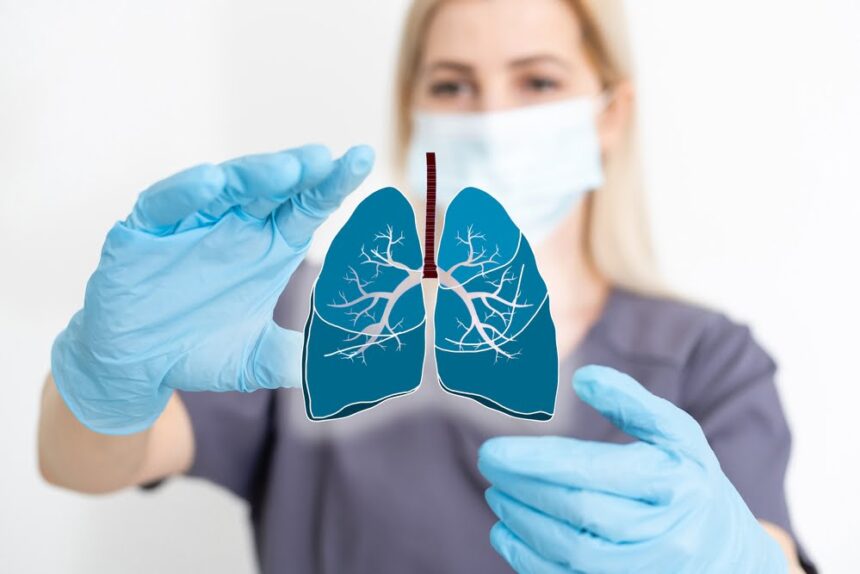Asthma and COPD (also known as a chronic obstructive pulmonary disease) are serious lung diseases that cause swelling in the airways, making breathing difficult. Both diseases may also present other symptoms like chest tightness, chronic cough, shortness of breath, and wheezing.
While these two diseases may seem similar, particularly in symptoms, their causes, diagnosis, treatment approaches, and medication are very different. Keep reading as we explore the major differences between asthma and chronic obstructive pulmonary disease.
Who is Likely to Have Asthma and COPD?
COPD is often prevalent among individuals who smoke or breathe in chemicals or any form of pollution at the workplace for an extended period. As a result, the condition usually starts in middle age or later years.
Asthma may sometimes be genetically passed down through families, meaning you are more likely to have it if one of your parents has the disease. Therefore, unlike COPD, asthma may be present in childhood and is actually one of the most common long-term illnesses in kids, affecting about 1 in 10 children.
Asthma and COPD Have Different Causes
Asthma and COPD have varying causes. Understanding what causes lung disease can help you identify your own condition and figure out how to get help when you start experiencing breathing complications.
The leading cause of chronic obstructive pulmonary disease is smoking. However, in and of itself, smoking is not the cause of COPD. Other environmental factors, such as exposure to smoke from other sources, like cleaning facilities, air pollutants, and secondhand smoke, increase chronic obstructive pulmonary disease risks.
On the other hand, asthma is an acute disease with a sudden onset, typically triggered by allergens, weather changes, lung infections, smoking, exercise, stress, chemicals, or other irritants. As a body’s natural response to an allergen or triggers, the lungs inflame, causing tightness in the airways and making it difficult to breathe, hence asthma attacks.
It is important to note that sometimes asthma may be hereditary, unlike COPD. However, it is less severe than COPD as airway muscles relax in asthma, making it easier for air to move in and out.
Asthma and COPD Have Different Diagnosis
Diagnosis for both asthma and COPD often start with a physical exam. The doctor will look at your throat and nose or use a stethoscope to listen to your lungs to establish the presence of symptoms like wheezing, chest tightness, coughing, and shortness of breath.
You may also be asked questions about your medical history, symptoms, exposure to chemicals and other irritants at the workplace, smoking history, and exposure to secondhand smoke.
After physical examination, the doctor will use different testing methods for asthma and chronic obstructive pulmonary disease.
For instance, asthma is diagnosed using the spirometry test for asthma or a quick test known as a peak flow test that determines how well your lungs function and diagnose whether you have asthma or just a cold. A chest X-ray may also be necessary to look for lung inflammation.
Much like asthma, COPD may be diagnosed using a spirometry test, which measures how much air you can move through your lungs in a few seconds. Although the test is similar to the spirometry test for asthma, only about 60 percent of people with COPD use the same spirometry test, which is why it is sometimes called the spirometry test for COPD.
Moreover, lung function tests are typically not used for diagnosis. Instead, the doctor may use a pulmonary function test to determine how well a person can move air from the lungs into their airways. This test is more effective than the lung function tests for asthma, which look at how much air a person can move.
Are Treatment Approaches for Asthma and COPD the Same?
The two conditions have different treatment approaches. In asthma, treating the symptoms aims to prevent the occurrence of an asthma attack. Usually, this may involve changing a person’s routine, such as reducing stress, using non-emergency medications to treat symptoms, and stopping or avoiding an allergen.
In COPD, treating the symptoms aims to prevent a person from having an exacerbation. In other words, treatment involves preventing a person’s symptoms from becoming worse. During treatment, the doctor may prescribe oral steroids, inhaled corticosteroids, and lung rehabilitation to help a person at high risk of exacerbating.
Conclusion
Both asthma and chronic obstructive pulmonary disease are severe respiratory diseases that can cause breathing problems. However, catching the disease early enough can help enhance treatment and prevent complications from developing.
Therefore, be sure to see a doctor if you have breathing problems, a cough that keeps you awake at night, wheezing, chest pain, or exercise intolerance. A doctor can help evaluate whether your breathing issues are related to asthma, COPD, or you just have a cold.

